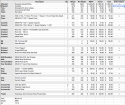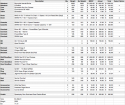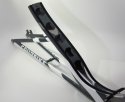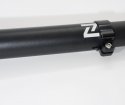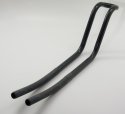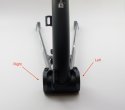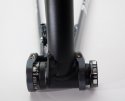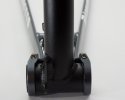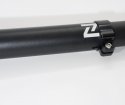ratz
Wielder of the Rubber Mallet
Create a User account on the forum to see the hires version of the photos
Ok the time has come to do it again. All the parts are starting to roll in.
I am going to build a Vendetta V20 with detailed photo documentation over the next Month.
Disclaimer: Same as last time you can simply take your frame kit to the local LBS and have them build it for far cheaper than what you are going to see here in this thread, and that is cool.
One of the initial posts will be the bill of materials and links to the best prices I had time to locate so that other can leverage my info to do better in the future.
Once again I also promise there will be some simply unnecessary high end parts used because it is fun and I want to play with them. Let's hope none of them are miserable failures.
On tap for this go round "SRAM E-Tap" Wireless shifting, Carbon Wheels, Power Meters oh my....
Technically some of this is not new because this is all based on an Upgrade to my old Vendetta and some of these parts have been in the field. But I've not given the build the slow winter thoroughness that it deserves; also it's probably time to highlight a number of things that have been improved since I did this with the Silvio 2.0.
Same as last time we'll try and keep comments off the main build section of the thread so that it can be printed for reference. Please put comments and questions in the thread: http://cruzbike.com/forum/threads/i-sense-a-disturbance-in-the-3rd-law.8965/ at least until this thread is done.
Thread is mirrored at BROL for those that prefer to read over there.
No worries though if we booboo; I can move the posts to the other thread no offense intend to anyone.
Ok the time has come to do it again. All the parts are starting to roll in.
I am going to build a Vendetta V20 with detailed photo documentation over the next Month.
Disclaimer: Same as last time you can simply take your frame kit to the local LBS and have them build it for far cheaper than what you are going to see here in this thread, and that is cool.
One of the initial posts will be the bill of materials and links to the best prices I had time to locate so that other can leverage my info to do better in the future.
Once again I also promise there will be some simply unnecessary high end parts used because it is fun and I want to play with them. Let's hope none of them are miserable failures.
On tap for this go round "SRAM E-Tap" Wireless shifting, Carbon Wheels, Power Meters oh my....
Technically some of this is not new because this is all based on an Upgrade to my old Vendetta and some of these parts have been in the field. But I've not given the build the slow winter thoroughness that it deserves; also it's probably time to highlight a number of things that have been improved since I did this with the Silvio 2.0.
Same as last time we'll try and keep comments off the main build section of the thread so that it can be printed for reference. Please put comments and questions in the thread: http://cruzbike.com/forum/threads/i-sense-a-disturbance-in-the-3rd-law.8965/ at least until this thread is done.
Thread is mirrored at BROL for those that prefer to read over there.
No worries though if we booboo; I can move the posts to the other thread no offense intend to anyone.





